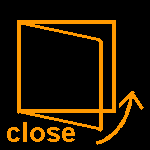Brashear Depression Position Finder
| Das aus Messing von Firmen wie Brashear oder Warner & Swasey gefertigte Prismen-Telskop gehört zu einem so genannten "Depression Range Finder (DRF)" oder "Depression Position Finder" (DPF) des Lewis Typs, der auf Küstenstationen aufgestellt war. Das gezeigte Exempülar hat die Nr. 297 und wurde von J.A. Brashear Co. Ltd in Pittsburgh (PA, USA) hergestellt. Es hat eine großes zylindrische Prismengehäuse mit Porro-1-Prismen. Am augeschraubten Okularstück ist eine Beleuchtungseinheit (nicht vorhanden) befestigt und ein mit Spiralgewinde fokussierbares oder herausnehmbares Okular, dessen Linse sich mit einer vorschwnkbaren Kappe schützen ließ (nicht vorhanden). Die Strichplatte ist nicht mehr vorhanden. Das Prismengehäuse und Okularstück lässt sich am Hauptubus mittels eines Fokussierungsrads und Zahnstangetrieb fokussieren. Ebenfalls am Tubus ist (unen) ein Montagerohr. Am Ende des Tubuses und nach der Objektivlinse ist eine Sonnenblende ansgeschraubt. Andere Teile, wie die Kippeisntellungsmontage, das Ggengewicht oder die Stirnstüztenbefestigung fehlen. Das Bild eines kompletten DPF im Transportkasten und der Diagramme aus einem Handbuch veranschaulichen den Gesamtaufbau. | The prism telescope, made of brass by companies such as Brashear or Warner & Swasey, belongs to a so-called "Depression Position Finder" (DPF) of the Lewis type, which was installed on coastal stations. The example shown is number 297 and was manufactured by J.A. Brashear Co. Ltd in Pittsburgh (PA, USA). It has a large cylindrical prism housing with Porro-1 prisms. An illumination unit (not included) and a spiral-threaded, focusable or removable eyepiece, the lens of which could be protected with a pivoting cap (not included), are attached to the eyepiece. The reticle is no longer present. The prism housing and eyepiece can be focused on the main bus using a focusing wheel and rack and pinion drive. The tube also has a mounting tube (at the bottom). A sunshade is screwed onto the end of the tube and after the objective lens. Other parts, such as the tilt mount, the luggage weight, or the forehead support mount, are missing. The picture of a complete DPF in its carrying case and the diagrams from a manual illustrate the overall design. |

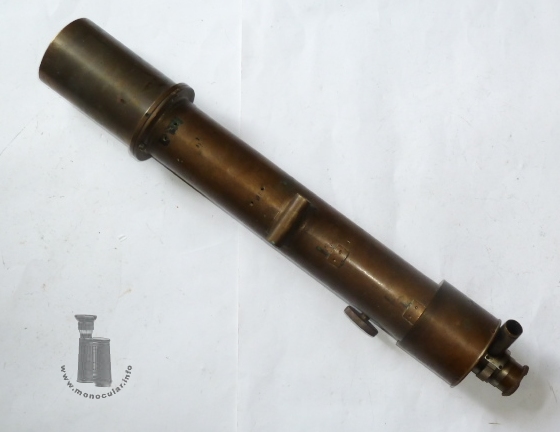
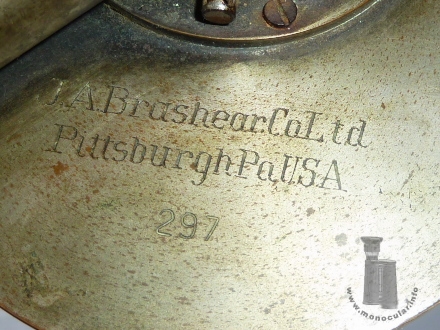
| Das 10x70 Teleskpop ist 72-75 cm lang und wiegt 8,8 kg. Die Augenmuschel ist 49 mm, das Okularstück 51mm und die 45mm lange Beleuchtungseinheit 24mm im Durchmeser. Das 88mm lange Prismengehäuse hat einen Durchmesser von 96mm. Der 398mm lange Haupttubus ist 81mm, die 150 mm lange Sonnenblende 96mm und der Verbindungsring dazwischcen 115mm im Durchmesser. | The 10x70 telescope is 72-75 cm long and weighs 8,8 kg. The eyecup measures 49 mm, the eyepiece is 51 mm, and the 45 mm long illumination unit is 24 mm in diameter. The 88 mm long prism housing has a diameter of 96 mm. The 398 mm long main tube is 81 mm, the 150 mm long sunshade is 96 mm, and the connecting ring between them is 115 mm in diameter. |

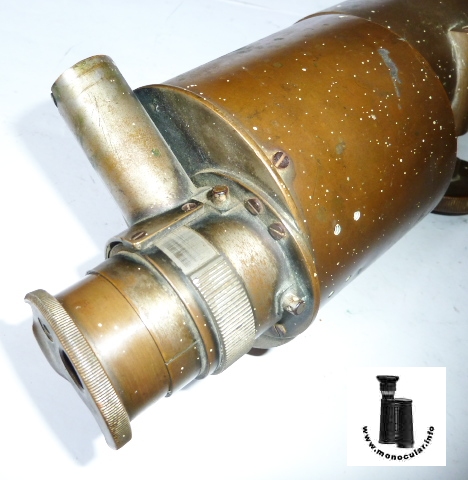
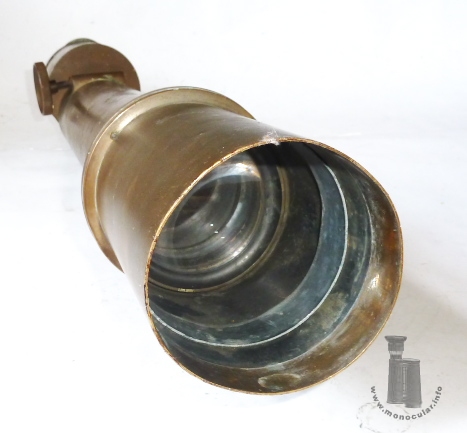
| Ein Armeehandbuch gibt folgende
ALLGEMEINE BESCHREIBUNG. |
An army handbook gives the following
GENERAL DESCRIPTION. |

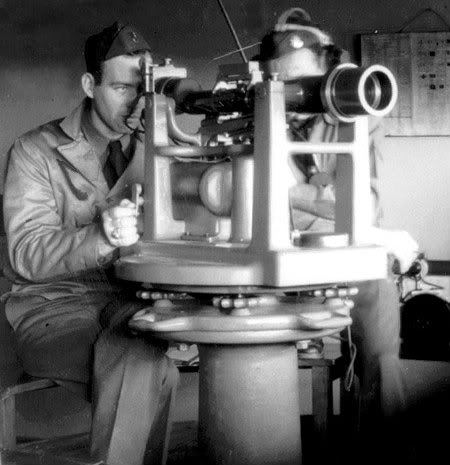
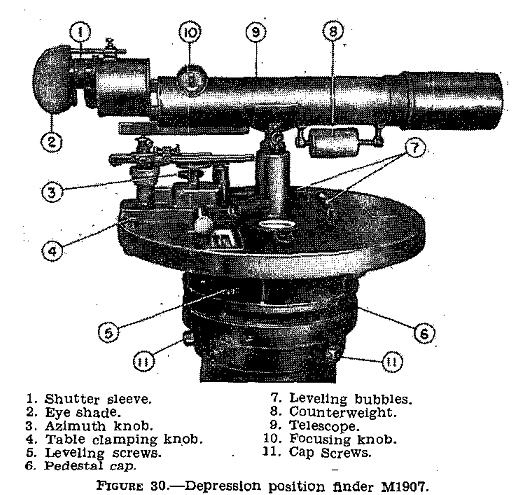
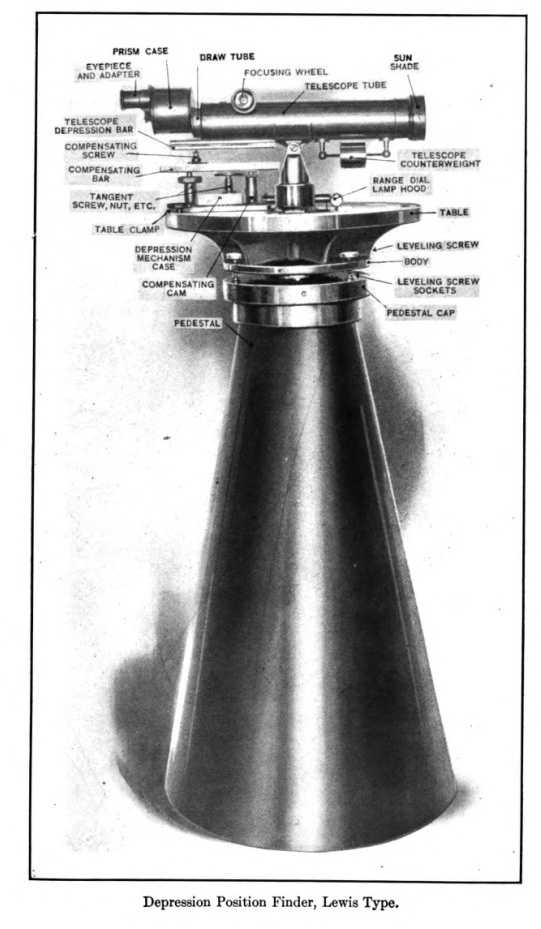
| Weitere Infos auch hier: | See also further inforamtion here: |
https://en.wikipedia.org/wiki/Depression_range_finder
https://military-history.fandom.com/wiki/Depression_position_finder
Fotos: Zeun

